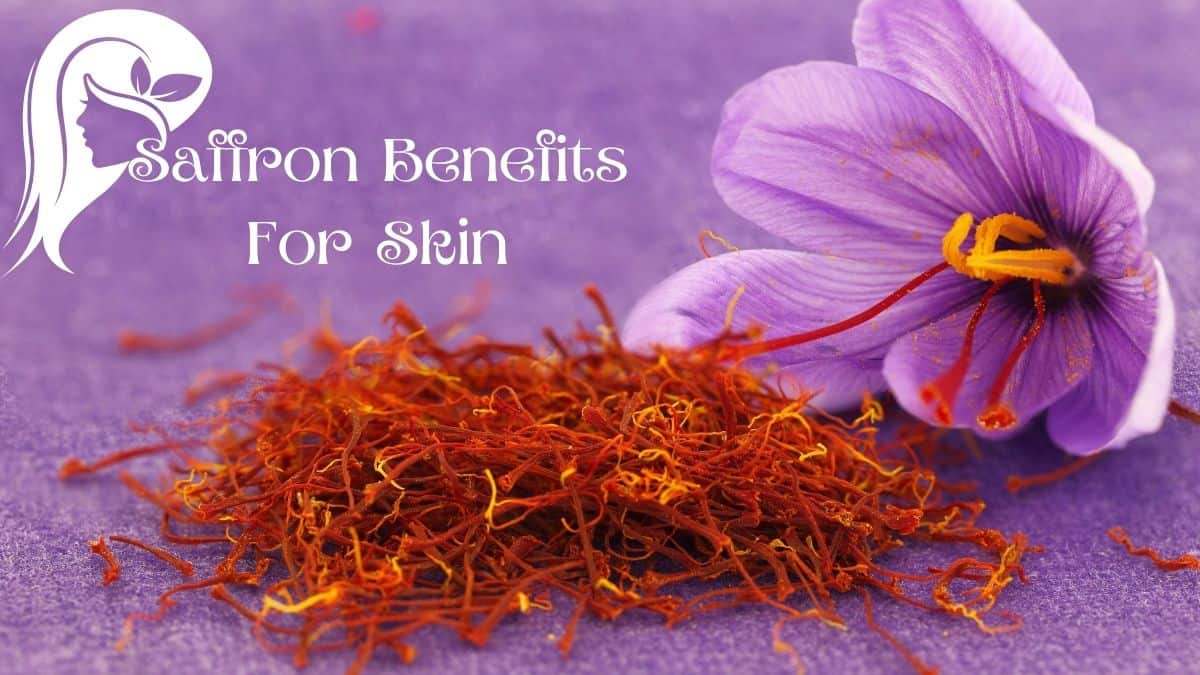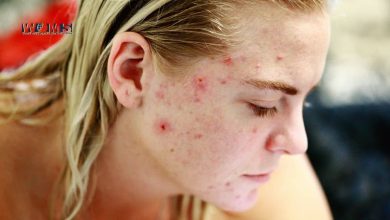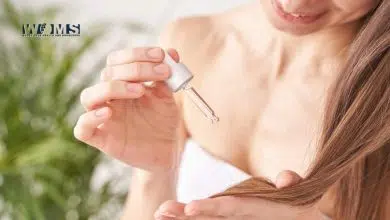Saffron Benefits For Skin

Saffron Benefits for skin have been a topic that people want to know more about. The saffron crocus, commonly known as Crocus sativus, is a brilliant crimson flower that hails from the species saffron crocus. It’s formed from the crisped stigmas of the blossom, which are the female part’s tips. It is thought that the plant originated in Greece.
It is now grown in a variety of nations, such as Iran, Spain, and China. Saffron has always been used to color and flavor cuisine. Spinal discomfort, bruises, and abscesses are among the diseases for which it is used as a traditional remedy. In the cosmetics industry, saffron is a useful component.
Many individuals believe that saffron can help with common skin problems including acne and irritation. Manganese is abundant in it, which helps to control blood sugar and, as a result, provides you with bright skin. This powerful spice can be combined with milk to make a powerful addition to your diet. Some of these claims are scientifically supported.
Let’s look at the benefits, treatments, and effects of saffron on the skin, as well as how to apply it.
9 Saffron Benefits for Skin
Here are several incredible ways saffron can help with practically any skin problem and are also the saffron benefits for skin.
1. Combat acne
Saffron is an excellent component for healing acne and outbreaks due to its antibacterial and anti-inflammatory properties. It has therapeutic characteristics that can help blemish skin clean up. 10 saffron threads and 5-6 fresh basil leaves Soak them in safe water, prepare a gel with them, and use it to clean up outbreaks.
2. Reducing pigmentation
Saffron is a natural substance that can help to reduce pigmentation, dark patches, and other skin imperfections. Several strands of saffron should be soaked in clean water. Prepare a mixture with this and 2 tablespoons turmeric powder. To lessen pigmentation and uneven skin tone on your skin, massage this to your face.3
3. Healing wounds
Saffron has therapeutic characteristics that can speed up the healing process of the face. Saffron used on wounds or wounded skin speeds up the healing process. Saffron also helps to lighten the markings over time. 2 teaspoons of saffron, soaked in water and crashed into a mixture. Put a little splash of coconut oil on the wounds gently. A daily dose will aid in the healing of wounds and the fading of markings.
4. Glowing skin
The skin becomes dry and cracked as a result of anthropogenic activities, severe weather, and other biological influences. The use of saffron regularly can revitalize your skin and make it glow. To get a natural glow, dissolve saffron in half a cup of raw milk and use it on your skin.
5. Enhancing complexion
Saffron is a skin-lightening treatment that is commonly used. It has been a treasured element for skin nourishment since the classical era. Saffron will give you a brisk tone if you utilize it regularly. Using your hands, smash a few strands of saffron. To produce a paste, combine 2 teaspoons of sandalwood powder with rose water. Apply to the skin for a more radiant appearance.
6. Eliminating suntan
Saffron’s skin-soothing and skin-lightening properties make it useful for removing tans. Putting saffron strands steeped in milk to the skin will help to remove the sunburn and make the skin more even-toned.
7. Skin toner
Saffron is a wonderful skin toner that gives the skin a rush of nutrients and beauty. If you mix a handful of strands of saffron into rose water, you’ll have a delightful skin pore cleansing in no time. This will also give your face a radiant look.
8. Saffron infused hair oil
Saffron, which is highly nutritious, may replenish the hair and make it look healthy and beautiful. Warm up a few strands of saffron in your hair oil and use it to massage your scalp regularly. You’ll have a healthier scalp and stronger hair as a result of this.
9. Protects against ultraviolet radiation
One of the most important things you can do for your skin’s health is to protect it against UV light. Ultraviolet light produces inflammation by promoting the formation of free radicals. This destroys your skin cells and speeds up the aging process. Crocin, the active ingredient in saffron, may be beneficial. Crocin possesses high antioxidant capabilities, according to a 2018 study. Antioxidants are chemicals that neutralize free radicals and hence lessen oxidative damage. Crocin also protects against ultraviolet A (UVA) rays, which cause premature skin aging. The study also discovered that crocin protects against ultraviolet B (UVB) rays, which cause early skin aging.
How To Use Saffron on Use Skin
As there are many saffron benefits for skin and is used for treating a variety of skin conditions, don’t apply it too often or your skin may turn yellow. However, if you use it cautiously, you should not have any negative side effects. So, what do you have to lose? Make a start on these skincare procedures to give your skin a healthy glow.
For acne treatment
Use five to six fresh basil leaves and Ten strands of saffron if you’re suffering from acne and want to get rid of it. Soak these ingredients in water, then grind them into a powder and massage the affected regions.
For banishing pigmentation
Fill a basin halfway with clean water and a little strand of saffron. Prepare a mixture with Two teaspoons turmeric powder. Rub the powder on your face thoroughly to remove pigmentation.
For clearing wounds
two teaspoons of saffron, soaked in clean water, made into a mixture. Put a small amount of coconut oil into the mixture before applying it to the scars. Regular use will progressively fade the scars and even out the skin tone.
Dull skin treatment
Soak a handful of strands of saffron in a cup of raw cow’s milk. Allow it to soak for a couple of minutes before applying it to your face. Almost immediately, your skin will feel a lot softer and more alive.
Get an even complexion
In a basin, mix rose water and 2 teaspoons of sandalwood powder. Prepare a mixture with it and a few strands of saffron. For a healthy, even complexion, apply evenly to the skin.
Tanning treatment
Using milk, soak a few strands of saffron. To remove a tan, apply it to your face regularly.
Tone your skin
It’s also not difficult to make a skin toner with saffron. Simply combine some saffron threads with rosewater in a basin and voilà! You’ve manufactured your toner.
Saffron Treatments
Honey-saffron mask
Blend powdered saffron strands with honey and massage to your face to relieve inflamed skin. After ten min, remove the mask and rinse it with cold water. Allow your skin to air dry before applying a gentle moisturizer.
Saffron gel
Administer a cooling therapy of saffron gel for the face to relieve itchy skin. Saffron strands should be crushed and mixed with natural aloe vera cream and rose water. Apply a small quantity to your skin and massage it in until it is completely absorbed. There is no need to rinse.
Saffron skin toner
In a non-metallic container, infuse a few crushed saffron threads in witch hazel or rose water for 1 to 2 days. Fill a spray bottle halfway with the mixture and use it as a toner as needed.
Saffron oil treatment
To minimize over-sensitizing your skin, use saffron essential oil with a carrier oil such as grapeseed or almond. Saffron oils can be used as a natural moisturizer to keep skin looking healthy and radiant.
Effects Of Saffron on Skin
Saffron is usually thought to be a safe ingredient to use on the skin. However, like with any natural substance, some people may be allergic to it. Before applying any Do It Yourself saffron formulations on your face, keep in mind to do a test run on the inside of your arm.
Pollen from the saffron plant can cause allergic responses in certain people. If you observe any of the following symptoms, stop using saffron right away: Sneezing, a stuffy nose, Redness and itchiness in the eyes, Rashes on the skin that is dry, burning, or hives.
Conclusion
Use saffron in your beauty treatment to make it more effective as there are many saffron benefits for skin. Its active ingredients fight inflammation, uneven skin tone, and Ultraviolet exposure.
It also provides Ultraviolet resistance, which is a common cause of premature skin aging. If this is your first time using saffron, proceed with caution. Because an allergic reaction is possible, a patch test should be performed beforehand. If you’re pregnant, stay away from saffron.
FAQs
How To Know If Saffron Is Pure
There are a few techniques to determine whether your saffron is pure or not:
● Taste – it’s unclear whether it’s sweet.
● Pure saffron has a pleasant scent similar to hay and honey.
● The hue of pure saffron will not fade when exposed to water.
Is Saffron Beneficial to One’s Skin?
Saffron is good for the skin since it includes a lot of nutrients and minerals that are good for it. It has anti-inflammatory properties and helps to calm the skin. It’s anti-microbial and antibacterial, and it can be used to remove dead skin cells. Saffron is utilized in many beauty products because of its ability to brighten skin and due to many saffron benefits for skin.




